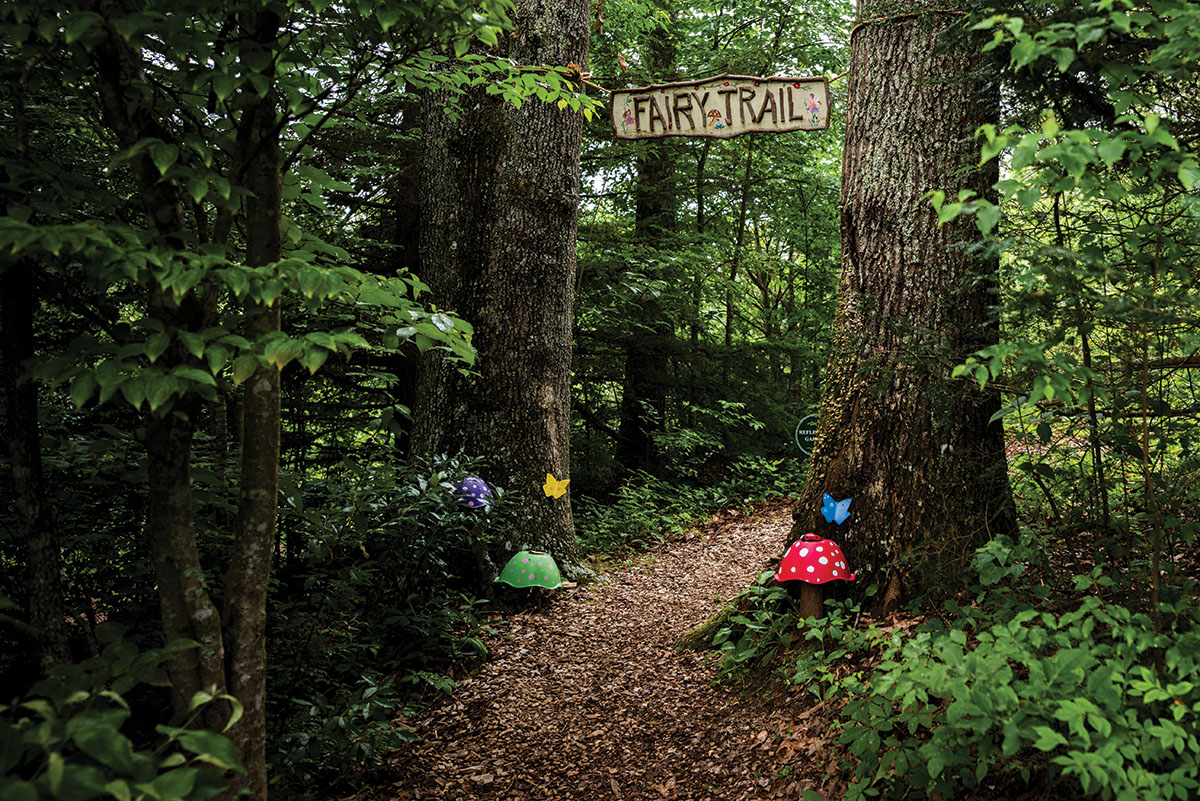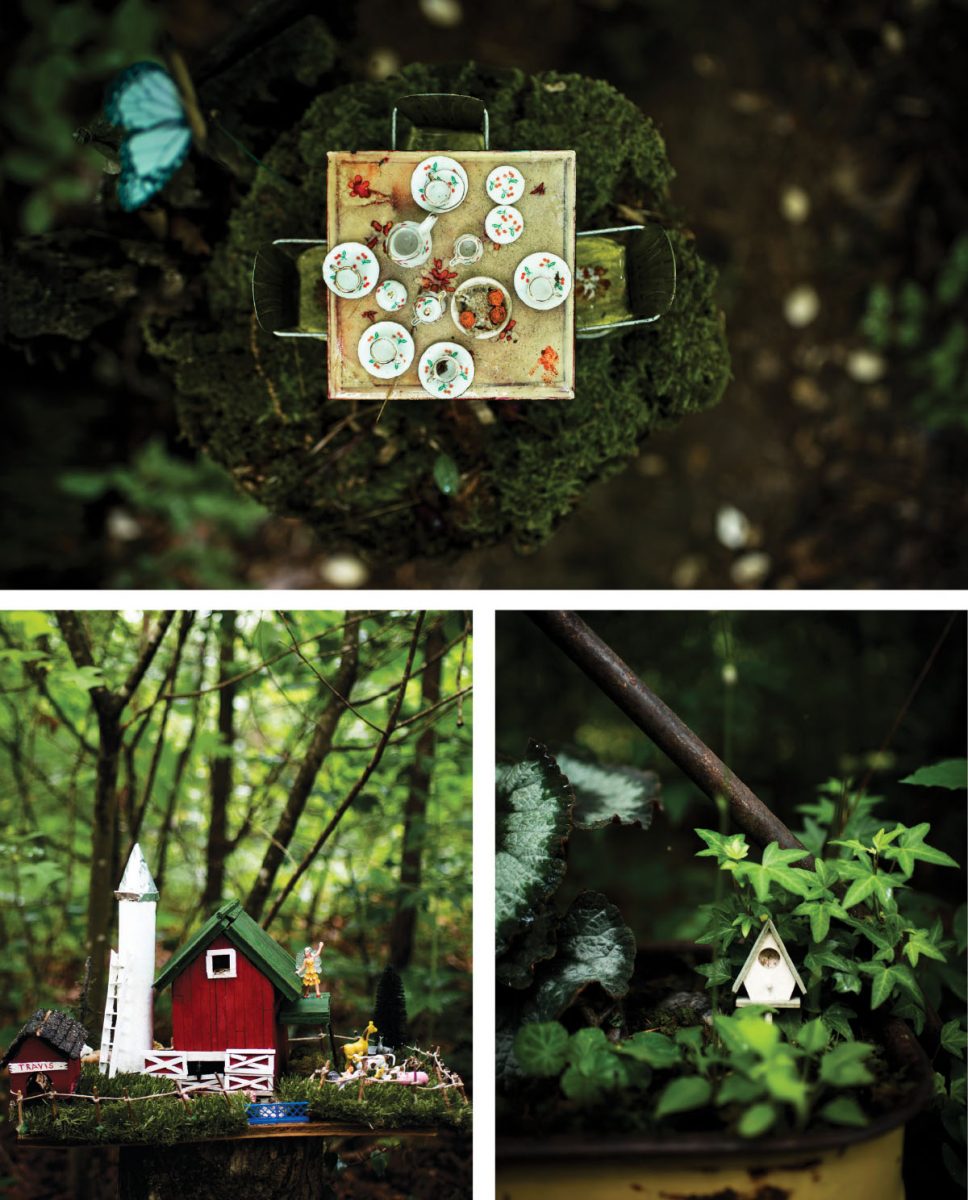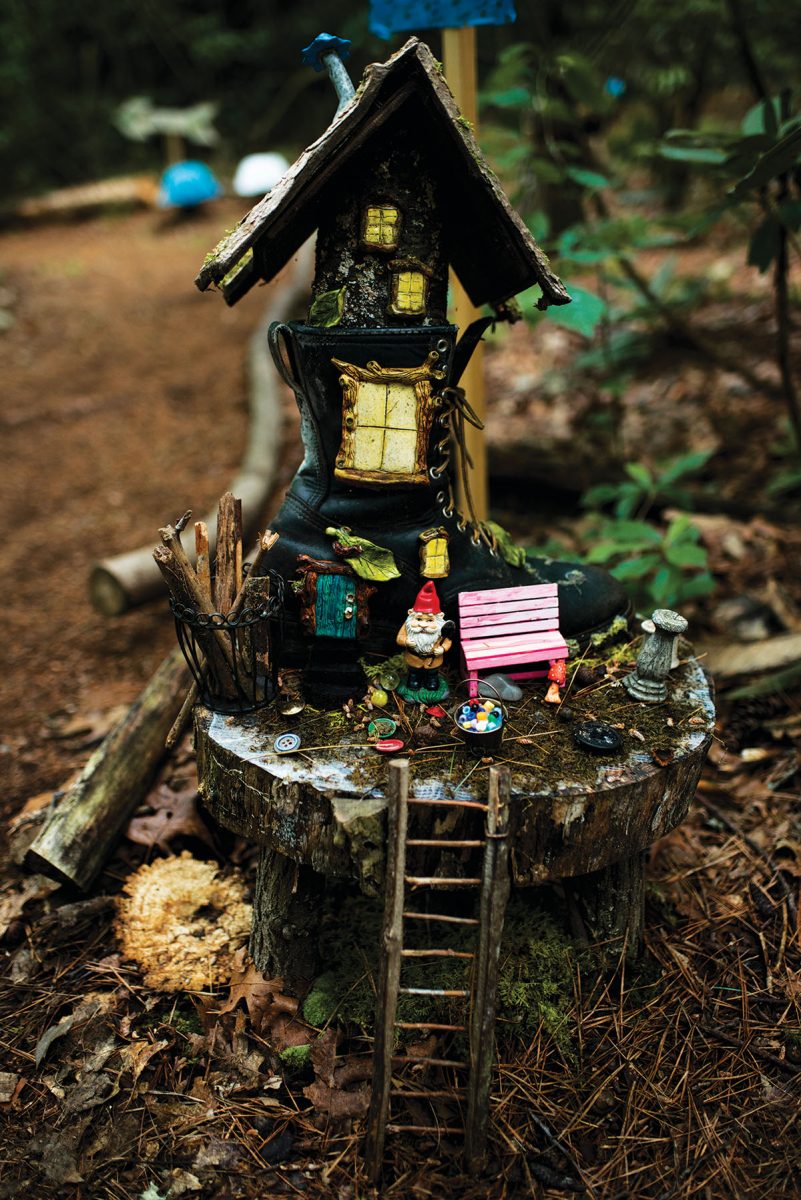Why we need fairy gardens more than ever

The Fairy Trail at Bullington Gardens, curated by Mary Martin.
Photo by Karin Strickland
Fairies are such stuff as dreams are made of. Maybe.
At Bullington Gardens, a 12-acre horticultural education center off Howard Gap Road, sprites make mischief along the Fairy Trail. The short, 100-yard foot path rambles through shaded laurel thickets, revealing a world rife with magic and whimsy — should you suspend your disbelief.
“The trail speaks to your imagination,” says John Murphy, director of Bullington.

And that it does. Fanciful vignettes frame the stroll. Fairies ride a merry-go-round donned in English ivy, tend to Travis the farm dog, and serve donuts at the Fairy Good Bakery (chocolate glazed, of course). After long days fluttering among rhododendrons, the imps retire to tree homes with mosaic sidewalks and bright blue doors.
Some live in condominiums. Conveniently located, the condos are a short flutter to the Secondhand Shop — a threadbare boot topped with a North Carolina license-plate roof. In fact, much of the trail is made of upcycled trappings: salad bowls turned upside down to resemble mushrooms, salad forks for door hinges, a rusted wagon to house shade plants.

Photos by Karin Strickland
Though Bullington unveiled the installation four years ago to attract younger visitors, it has exploded in popularity since May, when a popular travel blog circulated a post on social media. Since then, staff have been a “bit overwhelmed,” says Murphy, explaining Bullington’s efforts to adhere to social-distancing measures while accommodating all guests.
On a recent cloudless Saturday, there was a 40-minute wait.
But fairy gardens are nothing new. Centuries after Shakespeare’s fairy-laden romcom, A Midsummer Night’s Dream, dominated London stages, fairy gardens debuted at the 1893 Chicago World’s Fair. The Japanese pavilion’s bonsai dish gardens — a distant relative of today’s incarnation — caught the attention of a New York Times reporter, and the trend soon evolved.

Photo by Karin Strickland
Bullington volunteer Mary Martin credits the latest fairy infatuation to the pandemic. Amid financial distress and other worries, inhabiting another world, albeit briefly, is almost necessary.
“We need that little bit of time when the world isn’t real,” says Martin, who was instrumental in planning and implementing the trail. “We need to go somewhere else, even if it’s for five minutes.”
Escapism is universal. On that cloudless Saturday, young couples frequented the trail, their giggling children following closely behind. But older guests also meandered down the path, pausing to look behind bijou doors and read poems fixed to tree stumps. Shakespeare even makes an appearance. In iambic pentameter, the Bard of Avon suggests that should you see a “tiny faery, lying fast asleep,” the appropriate reaction is to shut your eyes and run away. Otherwise, the “faery spell” may be broken.
Apparently, though, they’re not that fragile after all. Because despite hundreds, if not thousands, of keen eyes watching fairies make mischief, the magic has yet to vanish at Bullington.
Bullington Gardens is located at 95 Upper Red Oak Trail in Hendersonville. The Fairy Trail and Village is open Monday through Friday, 9am-4pm. For more information, including social-distancing measures, visit bullingtongardens.org.
